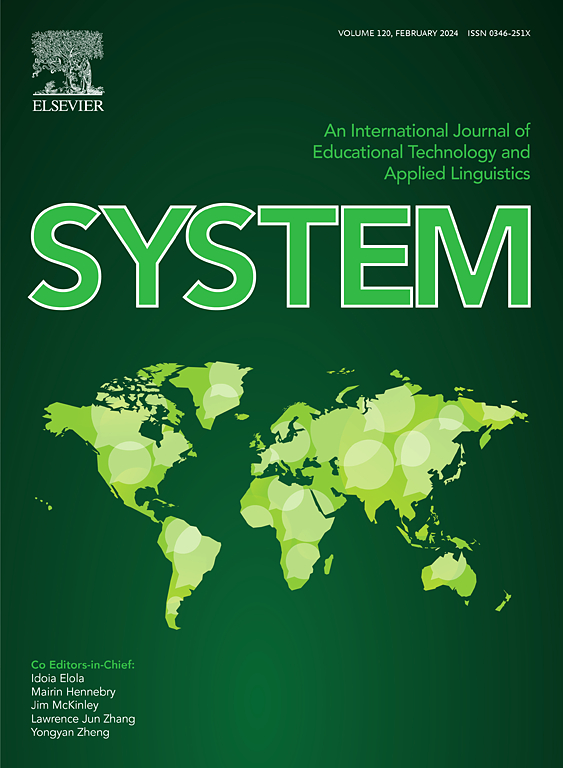当延长等待时间不足以让学生参与时:引出学生在第二语言全班演讲中的反应
IF 5.6
1区 文学
Q1 EDUCATION & EDUCATIONAL RESEARCH
引用次数: 0
摘要
本研究探讨了当延长等待时间(EWT)在引导学生参与课堂演讲中被证明无效时,第二语言(L2)英语教师用来追求学生反应的策略。利用EWT作为课堂互动能力的一个特征,对于语言教师加强目标语的使用和创造学习机会至关重要。几项关于在不同背景下使用EWT的研究表明,3到5秒的EWT会导致学生参与。然而,第二语言英语教师在延长等待时间后使用的顺序策略尚未得到详细的研究。因此,本研究旨在通过对话分析(CA)的视角,揭示二语英语教师在其ewt未能让学生参与时的管理策略,以追求学生的反应。通过对三个第二语言课堂的17小时视频记录的研究发现,当教师的ewt不足时,教师采用了各种互动策略来提高学生的参与度,包括使用拓宽问题、暗示、缩小范围的重复,以及利用一系列多模式资源(如教学人工工具和具体化行为)。虽然ewt仍然是一个有价值的工具,但本研究强调教师需要有一系列额外的策略来吸引学生的参与。因此,这对中投公司有直接影响。本文章由计算机程序翻译,如有差异,请以英文原文为准。
When extending wait-time is not enough for student participation: Eliciting student responses during L2 whole-class speaking
This study investigates the strategies Second Language (L2) English teachers use to pursue student responses when Extended Wait-Time (EWT) proves ineffective in leading to student participation during whole-class speaking. Benefitting from an EWT as a feature of Classroom Interactional Competence (CIC) is essential for language teachers to reinforce the use of the target language and create learning opportunities. Several studies focusing on the employment of EWTs in different contexts have revealed that three to 5 s of EWT leads to student involvement. However, the sequential strategies that L2 English teachers employ in the post-extended wait-time context have not yet been investigated in great detail. This study, therefore, aims to unfold the management strategies of an L2 English teacher to pursue student responses when her EWTs fail to involve students through the lens of Conversation Analysis (CA). The examination of 17 h of video recordings from three L2 English classrooms reveals that the teacher employs various interactional strategies to enhance student engagement when her EWTs are insufficient, including using question broadening, hinting, narrowed-down repetition, and drawing on a range of multimodal resources (such as pedagogical artifact and embodied behavior). While EWTs remain a valuable tool, this study emphasizes the need for teachers to have a repertoire of additional strategies to elicit student participation. As such, it has direct implications for CIC.
求助全文
通过发布文献求助,成功后即可免费获取论文全文。
去求助
来源期刊

System
Multiple-
CiteScore
8.80
自引率
8.30%
发文量
202
审稿时长
64 days
期刊介绍:
This international journal is devoted to the applications of educational technology and applied linguistics to problems of foreign language teaching and learning. Attention is paid to all languages and to problems associated with the study and teaching of English as a second or foreign language. The journal serves as a vehicle of expression for colleagues in developing countries. System prefers its contributors to provide articles which have a sound theoretical base with a visible practical application which can be generalized. The review section may take up works of a more theoretical nature to broaden the background.
 求助内容:
求助内容: 应助结果提醒方式:
应助结果提醒方式:


